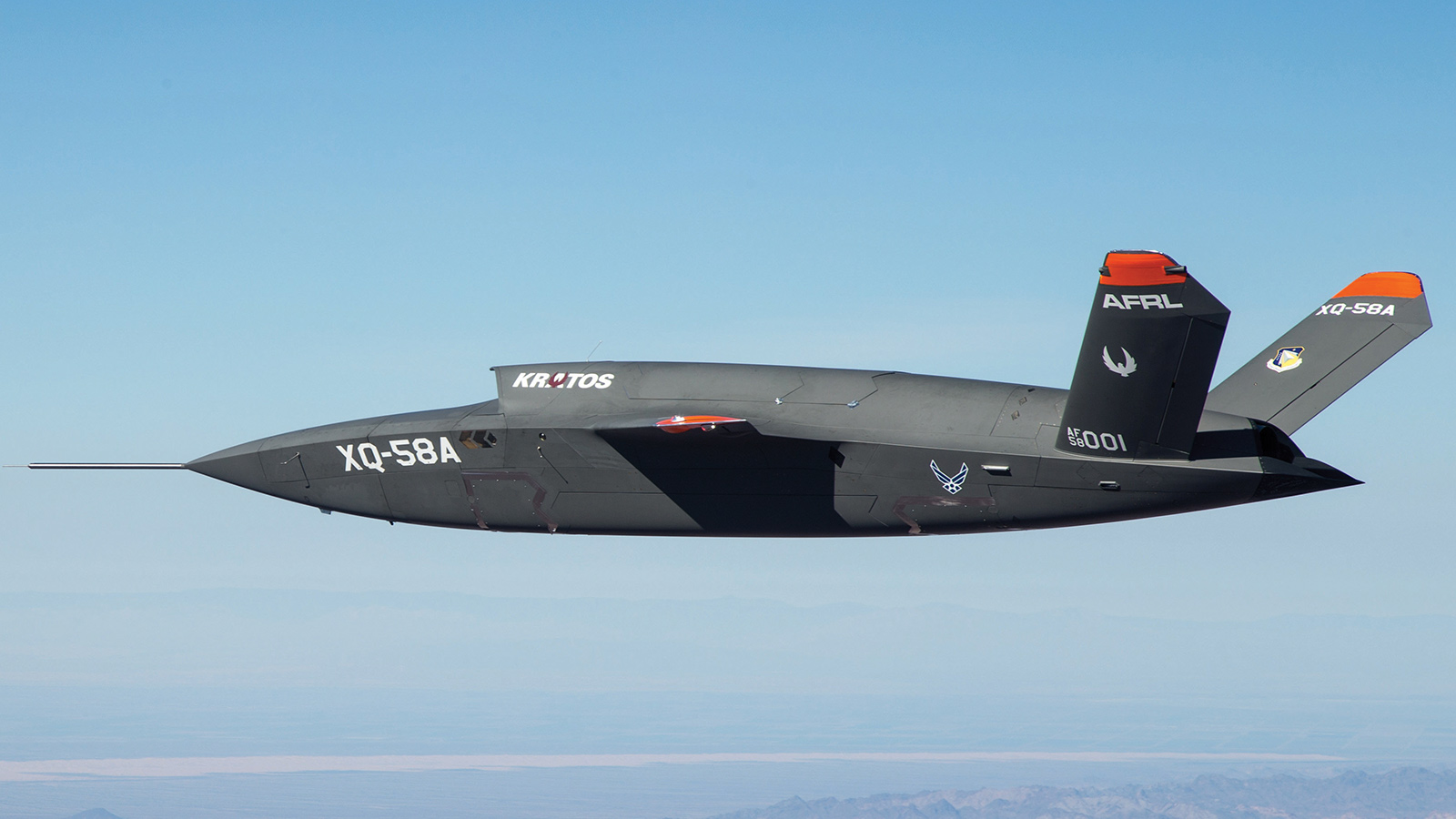Stay Up to Date
Submit your email address to receive the latest industry and Aerospace America news.
The Atmospheric Flight Mechanics Technical Committee addresses the aerodynamic performance, trajectories and attitude dynamics of aircraft, spacecraft, boosters and entry vehicles.
In March, the U.S. Air Force’s XQ-58A Valkyrie unmanned combat aerial vehicle took off from Yuma Proving Ground in Arizona on its first flight. San Diego-based Kratos Defense and Security Solutions designed and built the XQ-58A under contract with the Air Force Research Laboratory as a low-cost strike aircraft demonstration vehicle. The contract was awarded in July 2016. The Valkyrie design incorporates stealth technology that can carry weapons or surveillance payloads. Four more flight tests are planned in order to further evaluate the vehicle’s performance.
AFRL’s X-60A hypersonic research vehicle program completed its critical design review early in 2019. The X-60A is an air-dropped, single-stage, suborbital vehicle powered by a liquid-fueled rocket motor. It was designed as a research platform for conducting flight tests of hypersonics technology in the range of Mach 5-8 at altitudes between 70,000 to 130,000 feet (20-40 kilometers). The X-60A is designed to be dropped from a NASA C-20A aircraft. AFRL is conducting the project in partnership with Atlanta-based Generation Orbit Launch Services Inc. With the critical design review complete, vehicle fabrication was underway with the plan of the first test flight from Cecil Spaceport in Jacksonville, Florida, in early 2020.
The SpaceX Crew Dragon Demo-1 launched on a SpaceX Falcon 9 from Kennedy Space Center on Feb. 28 before docking with the International Space Station on March 3. The uncrewed orbital flight test carried cargo and a simulated passenger. It then undocked on March 8, reentered the atmosphere and splashed down in the Atlantic Ocean. The success of this test was a milestone in the SpaceX Crew Dragon program, paving the way for a flight test with crew for the Demo-2 mission. In April, the Crew Dragon capsule that flew for the Demo-1 flight test was destroyed during a ground test of the SuperDraco engines, the abort engines that would carry the Crew Dragon away from a failing Falcon during launch.
NASA’s Orion program tested its Launch Abort System, or LAS, in July. The Ascent Abort-2 flight test was launched on a modified Peacekeeper first-stage missile from Kennedy Space Center in Florida. The booster carried the capsule and LAS to an altitude of approximately 30,000 feet at Mach 1.15. The LAS then initiated the abort flight test, pulling the Orion capsule test article away from the booster and reorienting the vehicle for splashdown into the Atlantic Ocean. Data acquired during the July test will be used to validate preflight models and to prepare for the Artemis-1 mission in which a Space Launch System rocket will boost an uncrewed Orion capsule around the moon.
Related Posts
Stay Up to Date
Submit your email address to receive the latest industry and Aerospace America news.




